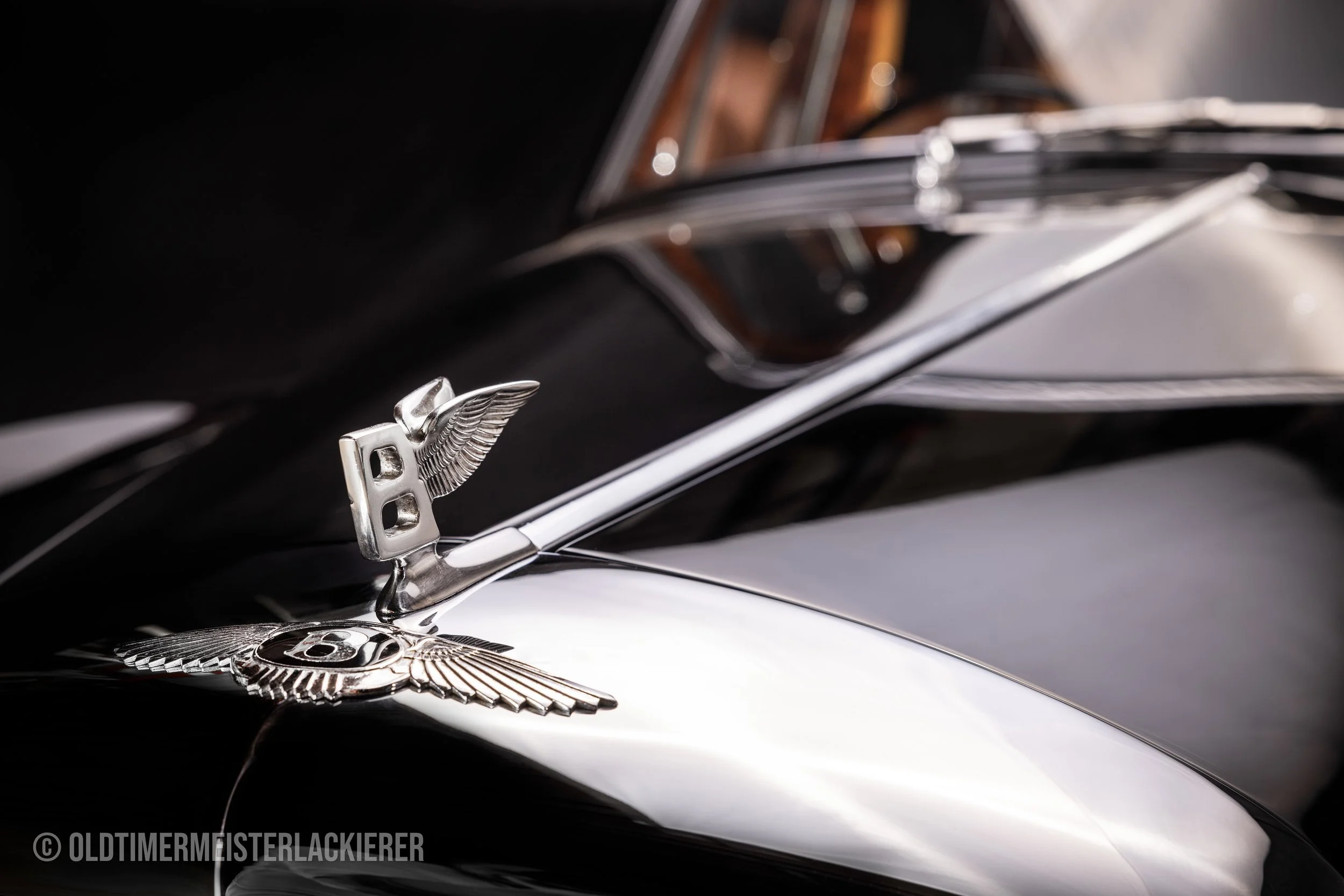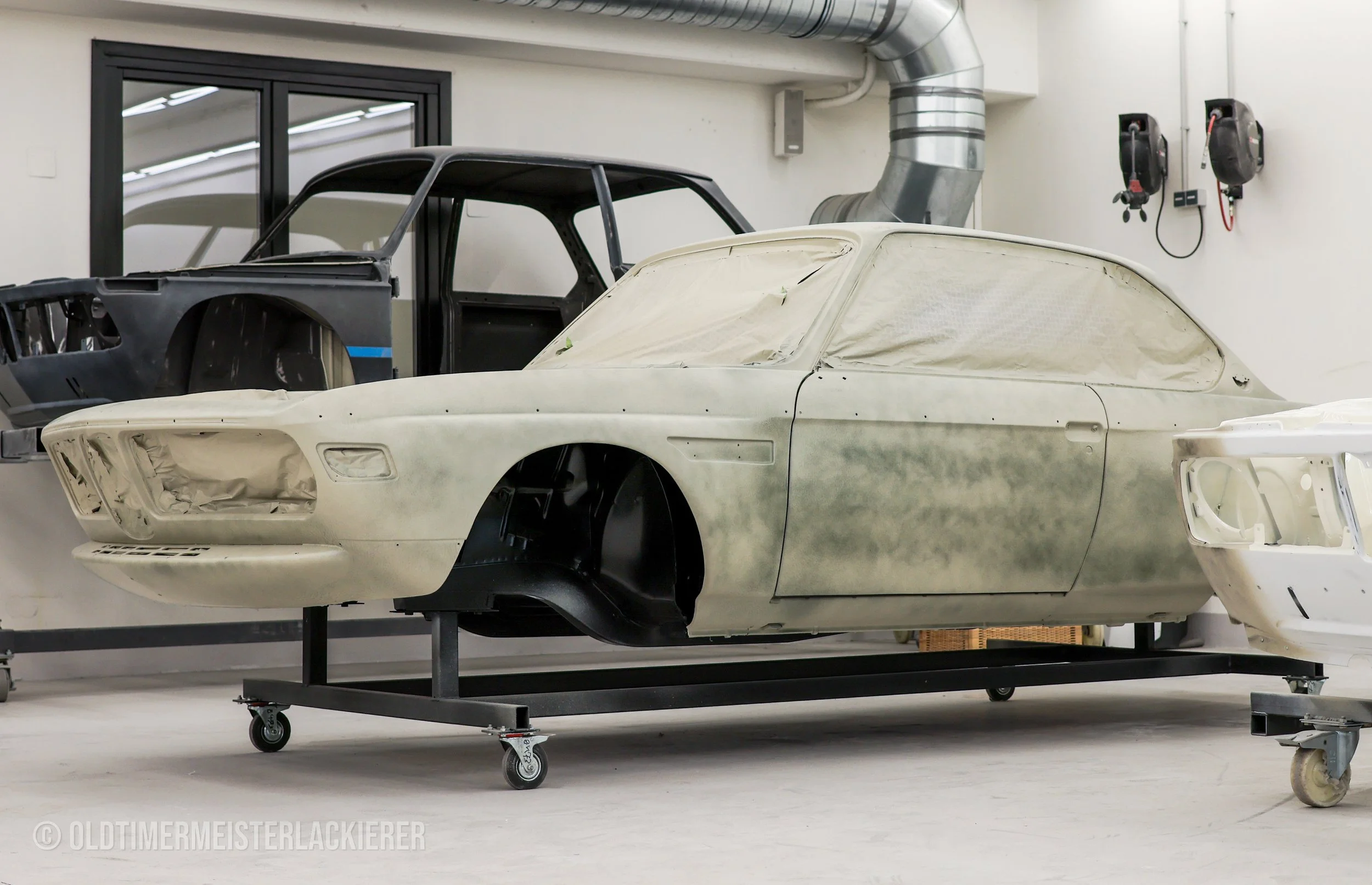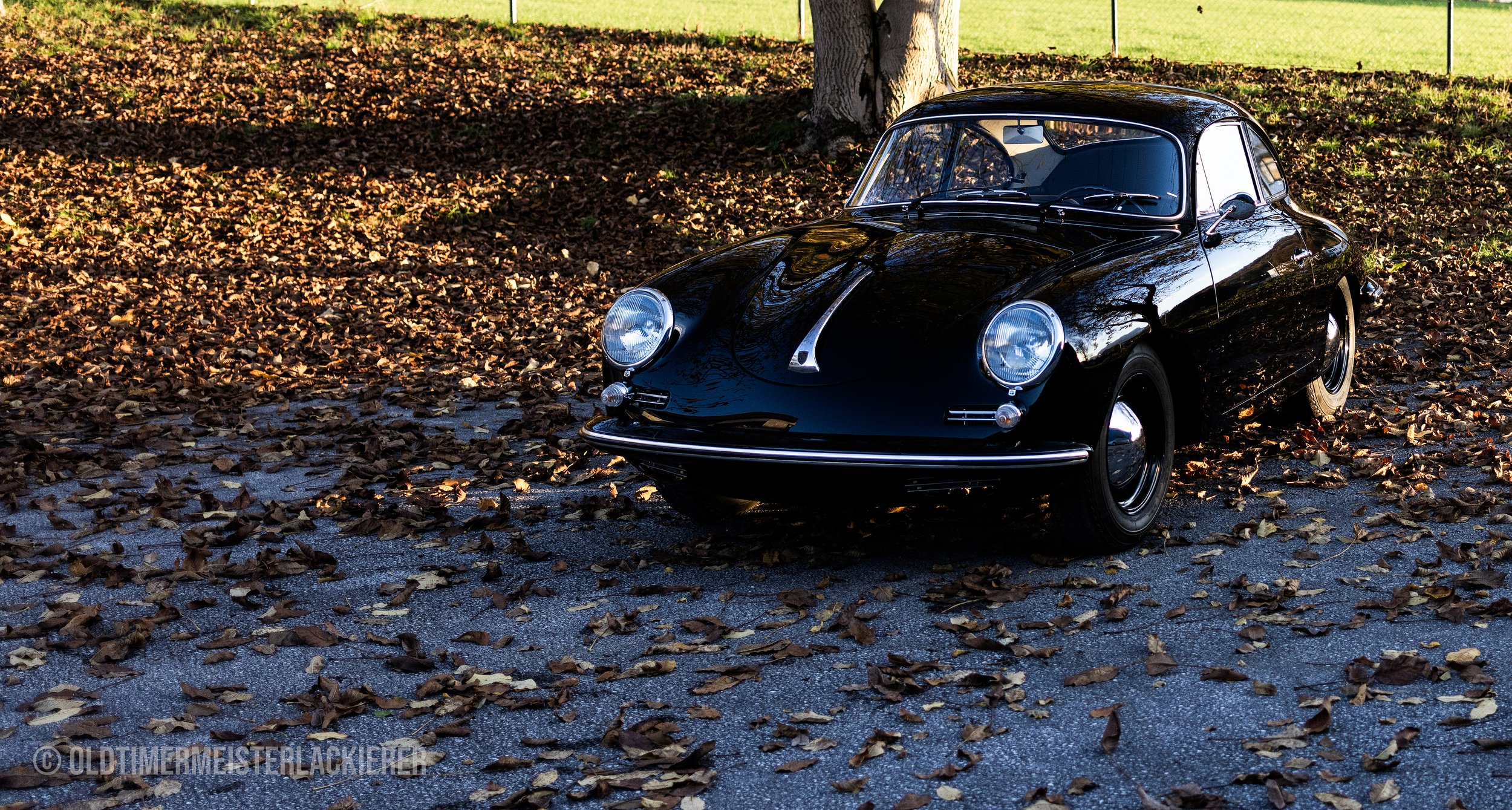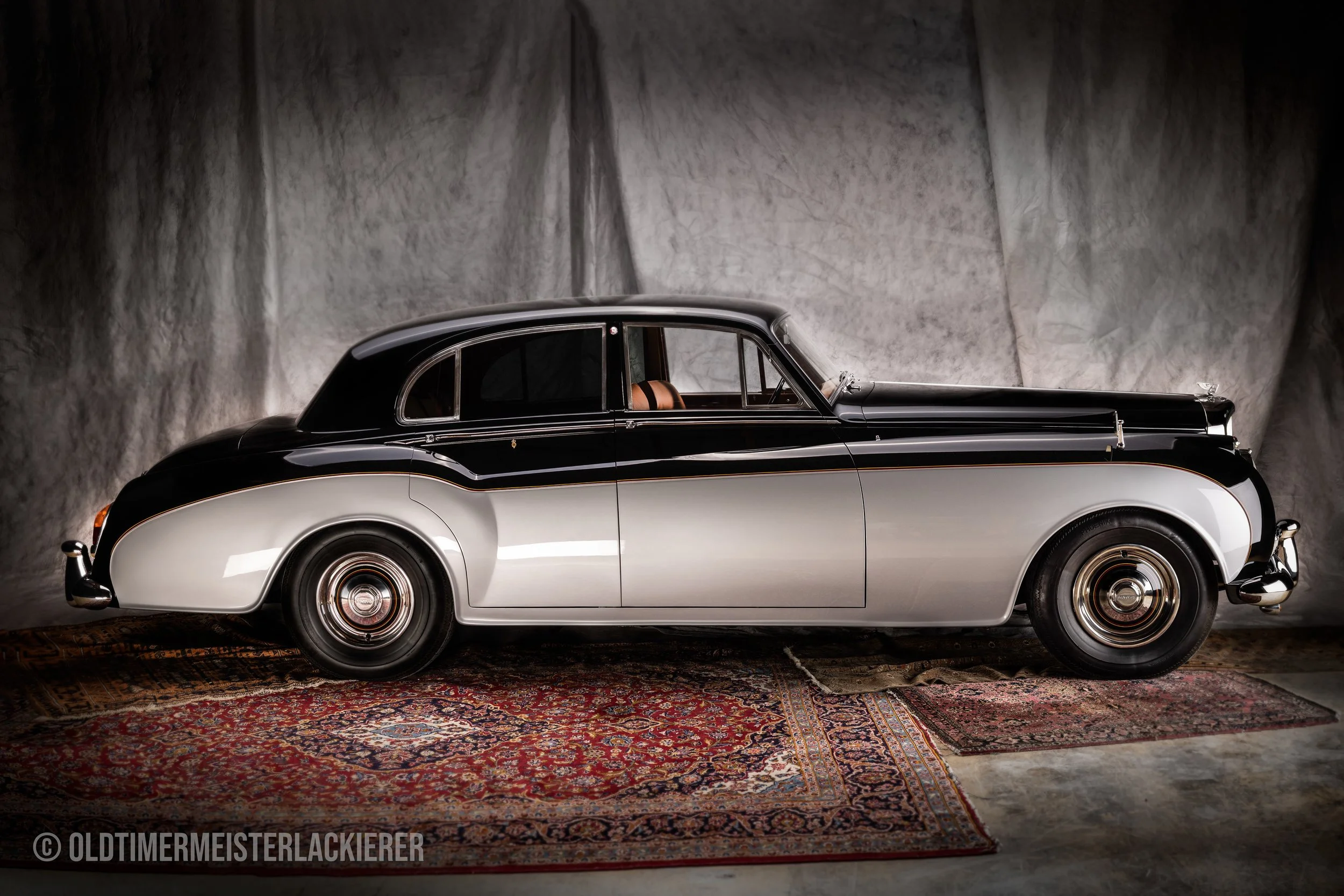What is the Egger's Surface System?
Classification and definition
The Egger's Surface System (ESS) describes the highest level of finishing that I offer in my workshop.
This is not a separate paint system, but the consistent optimization of an existing paint structure, a surface that is sanded completely flat and designed for maximum homogeneity of reflection.
The aim is a surface that shows no structure or movement in the light.
Even on large components, where even the smallest unevenness would be noticeable, the reflection remains completely calm.
The ESS is not a show car finish (i.e. not designed for long-term stability or practical suitability), but a precise, permanently stable high-gloss finish that shows no visual changes even after many years.
Technical basis: stability as a prerequisite
I use an epoxy primer with special properties as a base, which classic filler or acrylic systems do not offer in the same way:
Maximum corrosion protection
High chemical cross-linking
Diffusion-tight structure
Uniform drying and sanding behavior
No volume fluctuation after curing
This means that once the surface has been sanded flat, it stays that way. There are no sink marks, shrinkage or stresses that later become noticeable in the paint structure.
I am often asked about the thick-film epoxy I use:
As it is an essential part of my own system and my quality philosophy, we deliberately do not name the brand and product.
Requirements underground
A perfect body condition is not a mandatory requirement for the ESS, but it is a great advantage.
The more precisely the sheet metal is worked, the less material and correction work is required and the lower the overall layer thickness remains.
This has a positive effect on the value of the vehicle, as thin, even coats of paint are considered by experts to be of higher quality, both technically and visually.
In practice, however, the initial conditions are rarely ideal:
Many vehicles have warping, welded-in repair panels or old layers of filler.
A carefully constructed ESS can achieve a perfectly smooth, distortion-free surface even on difficult substrates.
The difference is not in the feasibility, but in the effort and precision required.
The Porsche 356 B in Egger's Surface System
From paint structure to finish
The basic paint structure is similar to that of a high-quality restoration paint job:
The primer is followed by a finely sanded insulating filler
Then the base coat
Finally, a 2K clear coat with a high solids content.
Depending on the customer's wishes or the original condition of the vehicle, painting with nitrocellulose lacquer is of course possible (without applying a clear coat afterwards).
The decisive difference takes place after the paint has been applied:
While conventional paintwork is merely polished, this is where the real work begins with ESS.
The lacquer layers (clear lacquer or nitrocellulose lacquer) are fully cured. Exclusively by air drying, without an oven.
This is followed by full-surface sanding in several stages: P800 → P1200 → P2000
The aim is to eliminate any structure so that the light is reflected without any refraction. Only then does the multi-stage polishing process begin, with various polishes, plate hardnesses and sponges.
There is no standard formula, as each surface behaves individually.
Bentley S1 "Jaymes Young"
An appraisal was carried out after the paintwork.
Due to the outstanding paint quality, the vehicle was valued significantly higher than before the restoration.
Practical examples and application
Customers can choose which finishing level they want for their paintwork. The Egger's Surface System represents the absolute final stage.
Example: BMW 3.0 CSL "Bob Lutz"
The large side section of the vehicle would have made even the smallest waves visible.
A standard finish would not have created the visual calm that the car deserves.
As there are big plans for the vehicle, the customer deliberately opted for the best possible quality. More on this in the future!
Example: BMW 3.0 CSL Silver
In my opinion, an ESS finish works best with dark paintwork, but is also possible in all other colors.
The new BMW 3.0 CSL in my workshop is painted in polar silver and given the ESS finish.
You can see more about this car on my socials and in the future also on Youtube.
The regular lead time of an ESS vehicle is at least 6 months, so that each work step can be carried out with the necessary precision and care required for the exceptional quality of Egger's Surface System.
Care and long-term behavior
An ESS surface does not require any special care, but is more sensitive to improper cleaning.
I always apply a ceramic sealant directly after the finish.
The gloss level remains constant over the years.
Some of my works show the same degree of reflection even after more than ten years as on the day of delivery.
Recommendations for handling an ESS surface:
Manual hand washing:
Avoid using unclean cleaning water or material, as the dirt particles can cause scratches. Always use soft microfiber cloths to prevent micro-scratches caused by friction.Refresh once a year: polishing and sealing
A thorough polish removes light surface scratches and maintains the shine.
After polishing, the surface should be treated with a high-quality ceramic sealant to protect the paint surface in the long term and improve cleanability.Avoid car washes
Automatic car washes, especially those with hard brushes, should be avoided as they can leave micro-scratches.
If the use of a car wash is unavoidable, a non-contact car wash should be used.
The Eggers Surface System is the consistent further development of the classic sanding paint principle, transferred to the automotive paint structure. For me, it is the logical final stage of a clean restoration finish: technically comprehensible, reproducible and permanently stable.
What does an Egger's Surface System cost?
Pricing in my workshop cannot be fixed across the board.
Each vehicle must be personally inspected by me in its stripped condition so that I can assess the condition of the substrate, what preparatory work is necessary and the total cost involved.
All these factors play a decisive role in determining the final price.
You can find out more about how a job with me works, from the initial assessment to the final delivery, in the next blog post: "How does a job with a master classic car painter work?"
Jörg Egger / Master classic car painter






